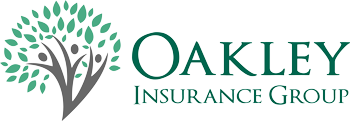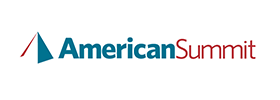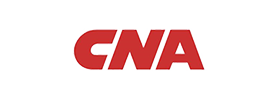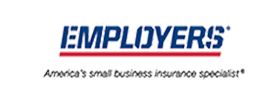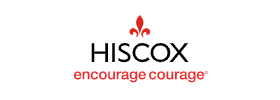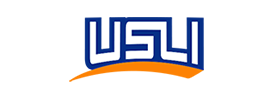Why You Should Read On
Have you ever thought, “Insurance is a scam, and they’re just trying to take my money!” or “I hate insurance, rates are going up so much I can’t keep up with it!” OR “Insurance rates increase just because the companies want to make more money.”? Then this article is for you!
It’s High!
As you know, our nation has undergone massive changes and the economy has shifted over the last couple of years. As things are beginning to settle the prices of products, services, and labor are remaining. Here at our agency, we like to present transparency in communication to our customers, and potential customers. We thought it would be best to offer detailed information and explanations of why your insurance rates are likely increasing and place it here, on our blog in a central spot accessible to anyone.
One of the simplest comparisons we can provide is the experience when you go to the grocery store. The eggs you’re used to buying now cost more. The paper towels you’re used to buying now cost more. The fresh and frozen food costs more. Everything costs more. Just as your trip to the grocery store costs more so will the cost to repair or replace your car, your home and the items inside it. Over the last two years we’ve seen prices rise almost monthly in some places. Businesses such as stores and restaurants can increase prices as they see necessary when it is necessary. Insurance is different, because insurance is a contract, price increases can only occur after a completed process between insurance companies and the state, and after the contract between you and the insurance company has expired.
Raising Rates
Firstly, for an insurance company to raise rates in any given state their rate increase has to be justified and approved by each state’s insurance department. Since most of those reading this are going to be our clients in Arizona, your insuring company’s rate increase has to be approved by the Arizona Department of Insurance before those rates take effect. Secondly, your rate can only be increased or in rare cases decreased at the end of your policy period. Auto policies have a six (6) or twelve (12) month policy period, and homeowner’s policies have a twelve (12) month policy period; and rate changes can only occur after those periods. One way of mitigating constant rate increases for our customers is by always writing auto policies with a twelve (12) month period.
The State of The Industry
There are several reasons why rates are increasing. Financial loss is a factor in the insurance industry. In 2022 we know of only one company that did not lose money, but to our knowledge every other major carrier lost money. That financial loss now must be recuperated in the following years.
The cost of a standard claim in 2022 costs 50% more than the same claim in 2021. In our agency we have seen windshield replacements that used to cost $400 no cost over $1,000.
Ooo! Shiny!
Vehicles are more complex now, so replacing a windshield, or a side mirror isn’t simple. We had a client whose side mirror was knocked off their truck, and while on an older model vehicle you could just attach a replacement or go pick-a-part from the junk yard, that is no longer a possibility. This side mirror has motorized parts, sensory and camera equipment. The mirror has to be exactly the right mirror, and once installed had to under go calibration for the side camera’s and blind-spot warning sensors. Can you imagine the cost of repairing a Tesla?! I can recall a customer who owns a 2022 vehicle and whose rate is increasing by about $1,000 for the year, simply because it’s a brand-new vehicle, no claims, no accidents, just new and shiny.
Wait?! My Car Isn’t New!
So, as we move along through this information journey there are some elements that many people don’t realize factor into their premium. If you own a big F350 truck, your premium is likely to be much higher than a Honda Civic, and not just because it’s bigger. Larger and more powerful vehicles can do a lot of damage, and this factors into your premiums. If someone rearends a little smart car, it’s much more likely that car will be totaled, and the people inside could be injured. Whereas, if a large truck is hit by a Honda civic, it’s more likely that the truck will sustain a few scratches and maybe a small dent. Furthermore, if a small car runs into a wall or a building, the damage could be minimal, while a large truck would cause significant damage to the structure it collided with. Another cause of increased premium on an older vehicle may simply be the ease or difficulty obtaining replacement parts. Of course, we’re not referring to vintage or collector vehicles, but to vehicles older than five years for which parts may be hard to find.
The 3 C’s: Claims, Citations, and Credit
The three C’s are some of the biggest factors of rate increases, of which you have some control over.
Claims: Any claims made on your insurance policy can and usually do affect its premium. We often hear “My policy had full glass coverage, and I didn’t have to pay anything.” That may be true, but your insurance paid for it. The common misconception about insurance is that you can make a claim, and everything goes away. It may go away for you, but only temporarily. As previously mentioned, because you have a policy period your claim may not immediately effect your rate, but once that contract/policy period expires your rate can be increased so the company can recover the money spent to cover your claim. All claims are tracked, logged, and accessible to any insurance company. A central database managed by Lexus Nexus, and others, contains reports for all insurance claims filed for auto, home, liability, etc… When you search for new insurance a CLUE report is pulled, also referred to as a loss-run report, that searches this database for any claims made. If claims are found, the rate will increase, and will increase in respect to the age of the most recent claim(s), the amount paid for the claim(s), and any at-fault rating. Claims will affect rates for up to five (5) years, and each insurance company has their own rating schedule for how much a claim’s age will affect premium. If a claim was filed for an at-fault accident, the rate will be much higher than something like a glass claim. It is important to remember, that if you are in an accident that was not your fault, and another insurance company of the other party involved paid your claim, these do not count against you. They are logged, and tracked, but not counted against you.
There is also a common misunderstanding about glass coverage; while glass may be included with a $0 deductible, all glass claims are tracked, and multiple claims will begin to count against you. With the significant increase in cost to replace a windshield, companies have begun to make rate changes after one glass claim. You may be thinking “I can’t help that a rock pounded my windshield on the interstate!” While this may be true here are a few steps to mitigate risk and glass claims.
- Stop tailgating! So many people follow other vehicles way too close on the road. I’ve seen this happen down our main streets here in Tucson. People follow so close, and because of rain, monsoon season, dirt on the road, and simply construction loose gravel is flying everywhere. If you look at the tires of the person in front of you, you can usually see when gravel’s being thrown and can see how far back you need to be to avoid a windshield strike.
- Don’t follow behind larger vehicles. Following behind a van is usually okay, but large consumer diesel trucks usually sit high and allow passage of gravel from the road up and past their bumper on to your car. This goes without saying, don’t follow semitrucks on the interstate or stay back, and definitely don’t follow a dump or transport truck with debris in it.
- If your windshield is struck by debris and leaves a small star type crack, get that fixed as soon as possible so it doesn’t grow, and avoids a full windshield replacement.
A little bit more about claims. If you have filed a significant number of claims, even small one’s it is possible that your rate will increase and your application for coverage could be denied, or your current insurance company could choose not to renew coverage. Please remember that insurance is a contract that transfers financial risk from yourself to the insurance company, but the insurance companies will recover those funds regardless of which company you insure with. Therefore, if you can pay for a repair to your vehicle that isn’t being covered by someone else at fault, you don’t need to file a claim. It is more advisable to file a claim only if you are unable to pay for repairs or liability yourself.
Citations: Our next C is citations. Some people are wired differently and have a “lead foot,” a term used to illustrate that they tend to drive more aggressively and often faster than others. While getting somewhere quicker isn’t bad, breaking the law and driving in a way that endangers yourself and others, is. Just like claims, the MVD or in some places the DMV tracks any tickets or citation that a driver has received. When insurance quotes are generated a MVR (motor vehicle record) is pulled and any citations will show up. Just like claims, any citation will be retrieved and each insurance company will rate their premium based on the type of citation and its age. Any traffic violation will show up, from small parking tickets to DUI/DWI’s and reckless driving.
Credit: The last C is credit. Unfortunately, the United States lives in a state of “credit.” This means that if you have a lower credit score it can impact your insurance premium. Insurance companies do not use a hard credit pull, but a soft credit pull. The reason why insurance companies use a credit score for premium rating is to gauge financial responsibility. If there’s a good track record of paying bills and debts on time, you are more likely to pay your insurance premium on time, or in-full at the point of sale. Additionally, it has been shown that those with lower credit scores are more likely to file claims.
Homeowners
For those that own homes, you may notice your rates increase even though you haven’t filed a claim, and this is because the value of your home has increased. If you compare you last policy, to your most current (more expensive) policy, note your Coverage – A. You will see that last year the amount of coverage needed to rebuild your home was probably $50,000 or more less than this years, simply because the value of your home has increased. This value refers to the cost of material and labor it would take to rebuild the structure of your home, not your personal belongings inside of it. Since the amount needed to rebuild your home in case of total loss has increased by thousands of dollars, the rate will increase to match that extra level of coverage.
You Sue Me? I’ll Sue You!
This wasn’t on our radar as a reason why rates are increasing until we received a published article from one of our insurance companies. Factors called Social Inflation are driving up rates. Social inflation is basically the impact of social dynamics amongst members of society through public and social media which are desensitizing people to “numbers.” Numbers referring to large sums of money. From 2015 to 2020 the median cost of a jury award over $10 million increased by 35%, from $20 million to $27 million. People are seeing these large sums being awarded, class action lawsuits, unprecedented lottery prize winnings, or even celebrity salaries and these numbers are driving up costs because of the desensitization to the value of money. When people are in accidents whether vehicle related or not, they are becoming greedy. People are no longer seeking coverage of medical bills, and cost of living while they recover, but they are seeing punitive damages simply because they’ve been inconvenienced or are filled with greed and opportunity.
In Summary
To summarize, though it may feel like insurance isn’t doing you a favor, and that rates are being raised willy-nilly, neither of those are true. Insurance is heavily regulated in the United States, and through state laws vary, you still need insurance to cover what could be exponential costs in the case of a loss or at-fault accident.
Thank you for reading!
Author: Micaiah – Oakley Insurance Agent – Agency Marketing and Development
